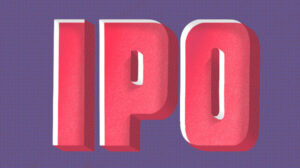As you probably have already heard, Slack went public this week via direct listing rather than a traditional initial public offering.
Subscribe to the Crunchbase Daily
Shares of the work messaging and productivity company, trading under the ticker symbol WORK, opened Thursday at $38.50, a jump of nearly 50 percent from its $26 a share reference price. The stock closed today at $37.22.
The debut marked the third-largest initial trade in the U.S., according to Yahoo Finance.
Rick Kline, co-chair of capital markets and partner at global law firm, Goodwin, offered up some perspective on when direct listings make sense and what are the benefits and challenges around them. He’s not just speaking off the cuff. He and his team led Slack’s listing.
First off, for those who don’t know a direct listing “is when a private company registers already outstanding shares for resale by existing stockholders on a Form S-1,” according to Kline. The company does not sell any shares or raise any money in a direct listing.
There are cases when this approach is considered to be a more favorable option than a traditional IPO. According to Kline, a direct listing “allows a company to become public without taking the dilution of selling shares in an IPO where the offering price is often at a discount to the true market value of the company.”
“It isn’t right for every company, but it is an interesting alternative for companies with the right profiles,” he wrote via email, as it provides no dilution at listing, lower aggregate fees and expenses to get public and no lockups once trading begins. Companies “that have strong balance sheets prior to an IPO and a significant, positive reputation in the investing company will likely consider this as an alternative method to get public.”
But there are challenges too, such as: a lack of funds raised for the company at the listing and a more restrictive pre-offering process, Kline added.
Slack and Spotify before it (in 2018) are examples of companies that had success going this route, he said.
“Slack has a strong balance sheet from pre-IPO fundraisings and a great reputation as an important enterprise software company,” Kline said. “This allowed Slack to consider what their priorities were for becoming a public company. A direct listing helped them achieve their goals.”
For details on just what kind of balance sheet had, check out Alex’s piece outlining the company’s first-quarter performance, which included it posting revenue of $134.8 million, a 66 percent increase compared to the 2018 first quarter.
The team that advised on Slack’s IPO also included associates Sarah Axtell and Erica Kassman and partners David Van Horne, Lynda Galligan and Brad Weber and associates Sophie Stramm, Monica Patel and Xing Yan.
Illustration: Li-Anne Dias

Stay up to date with recent funding rounds, acquisitions, and more with the Crunchbase Daily.








67.1K Followers